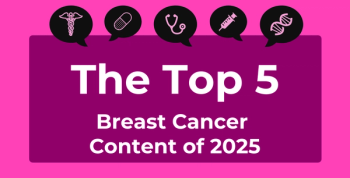
Few Eligible Cancer Patients Received All Quality Measures That Improve Survival Rates
Survival rates increase as more quality measures are incorporated into care, but only 13% of eligible patients with Stage IIIA non-small cell lung cancer actually receive all 4 measures.
There are 4 quality measures that have been identified as associated with improving overall survival for patients with Stage IIIA non-small cell lung cancer (NSCLC) who underwent surgery. A new study presented at the 96th AATS Annual Meeting found that survival rates increase as more quality measures are incorporated into care, but only 13% of eligible patients actually receive all 4 measures.
The researchers used data from the National Cancer Data Base and found that survival rates for these patients increased more than 3-fold when they received all 4 quality measures.
"Compliance with national recommendations regarding induction therapy and approach to surgical resection are crucial to optimizing long-term survival outcomes in clinical Stage IIIA NSCLC," lead author Pamela Samson MD, MPHS, of Washington University in St. Louis,
The 4 quality measures studied were neoadjuvant multiagent chemotherapy, lobar (or greater) resection, sampling of at least 10 lymph nodes, and R0 resection, which means that the tumor has been removed to the extent that the margins are free of cancerous cells.
For patients who did not receive any of the quality measures, overall median survival was 12.7 months, and survival increased steadily as more measures were incorporated: 25 months for those receiving 1 measure; 31.4 months for those receiving 2 measures; 36.6 months for those receiving 3 measures; and 43.5 months for those receiving all 4 measures.
For the 19% of patients with Stage IIIA NSCLC who underwent surgical resection, the measure that was most frequently missed was receipt of neoadjuvant multiagent chemotherapy. Only 30% of patients received this measure, followed by 40% of patients who had a sampling of at least 10 lymph nodes taken, 84% of patients who received a lobectomy of greater resection, and 87% of patients who obtained negative surgical margins.
Patients who had private insurance or Medicare, a higher education, and received their care at an academic cancer or high-volume surgical center were more likely to receive all 4 quality measures. Patients who received fewer measures tended to be older, non-Caucasion, and had multiple comorbidities.
Newsletter
Stay ahead of policy, cost, and value—subscribe to AJMC for expert insights at the intersection of clinical care and health economics.









































